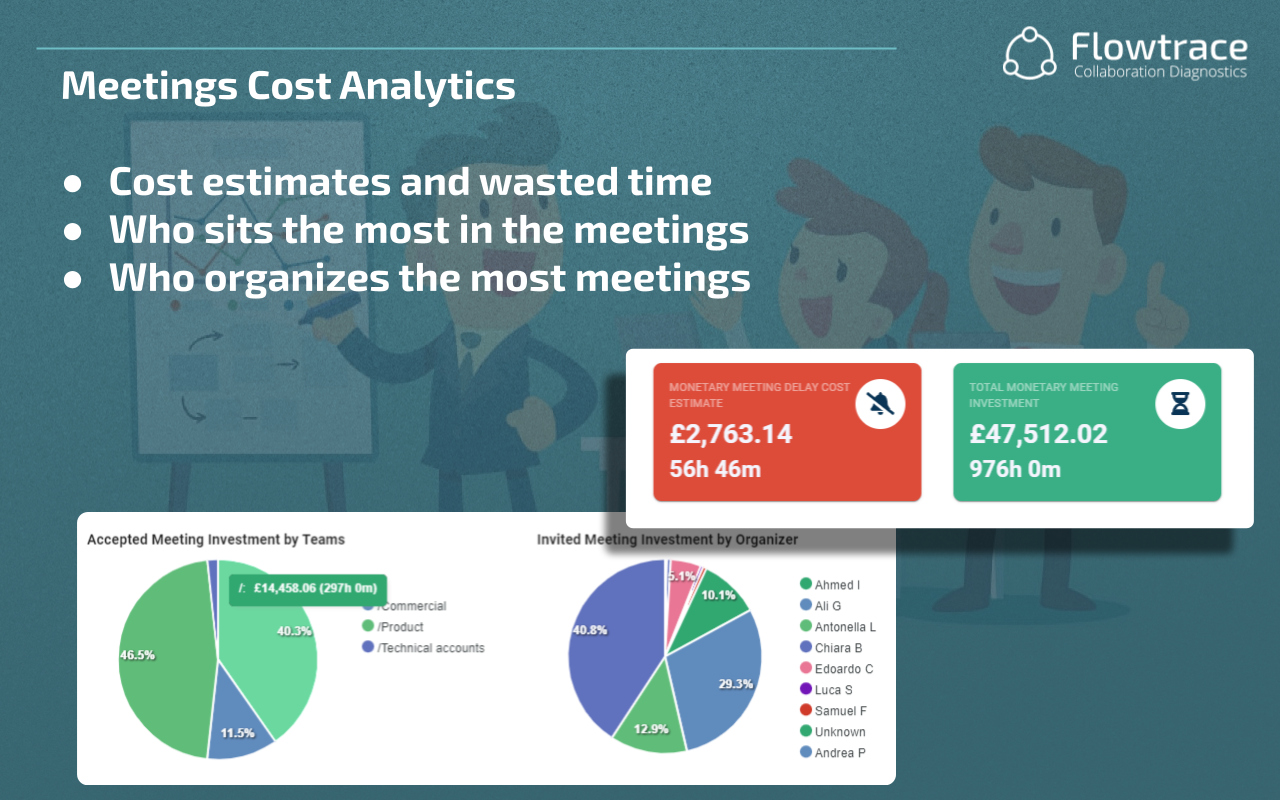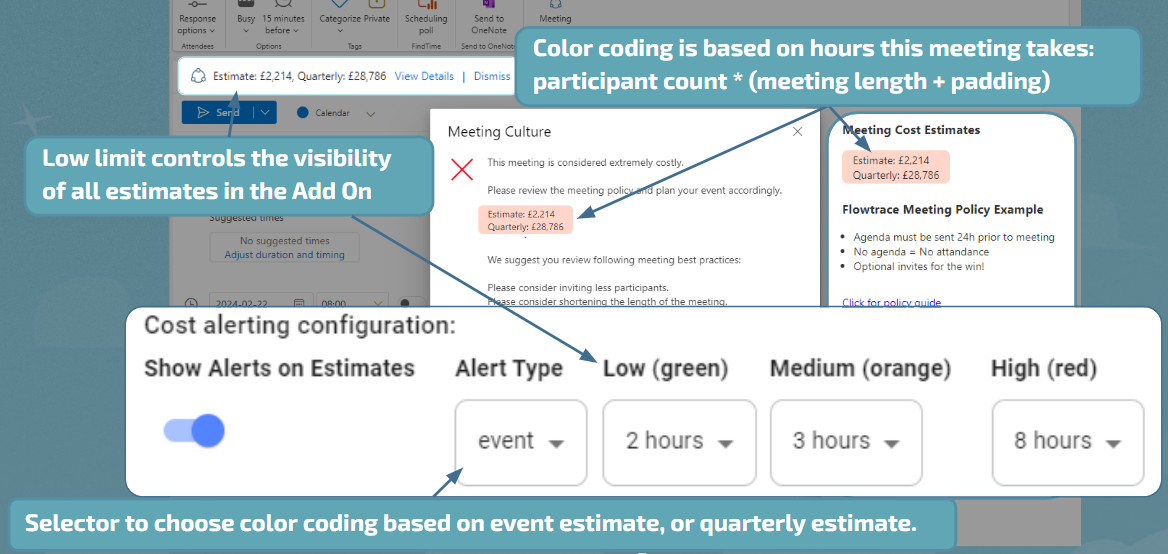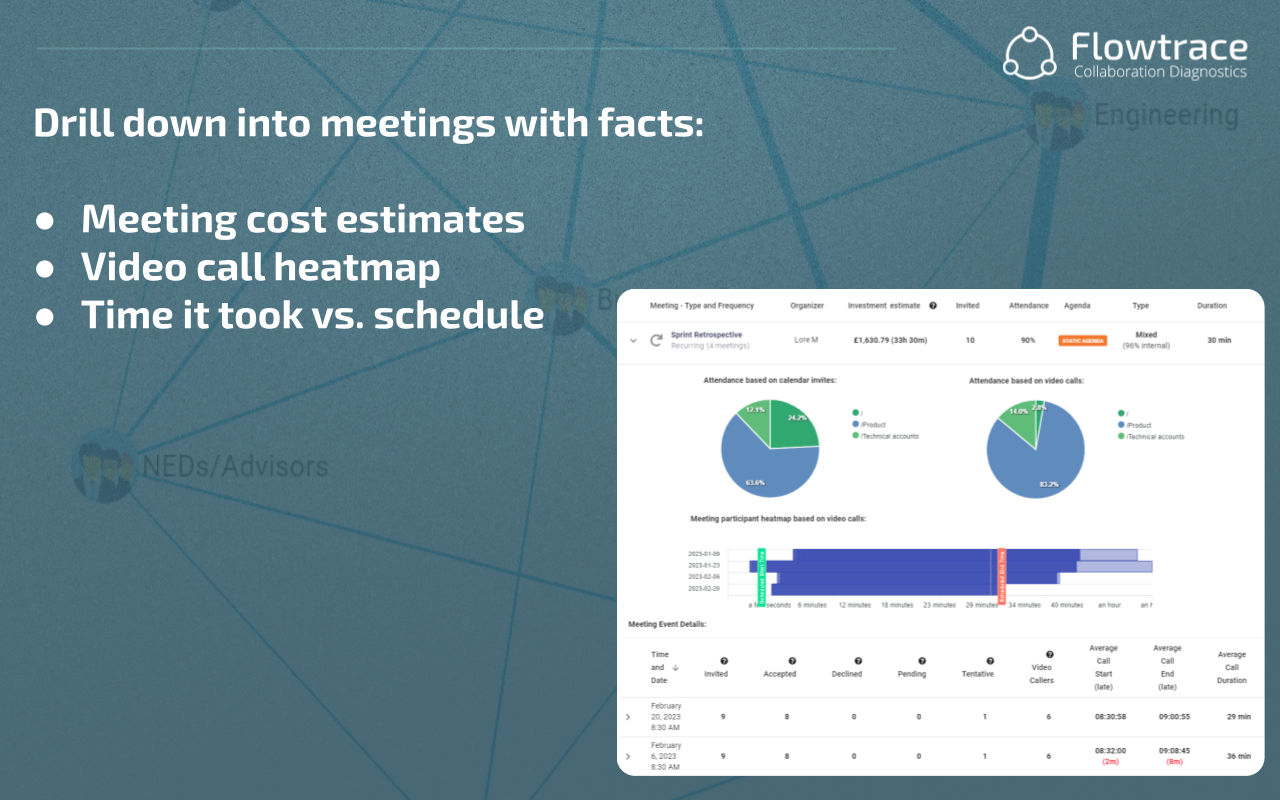Meetings are an integral part of business operations, providing a platform for collaboration, decision-making, and strategic planning. However, they also come with associated costs that can impact an organization's bottom line. These costs are not only direct—such as expenditures on technology, facilities, and materials—but also indirect, including the valuable time that employees spend in meetings instead of performing other potentially revenue-generating tasks.
Given the substantial investment that meetings can require, it's essential for leaders to think strategically about reducing these costs to enhance overall efficiency. This involves not just cutting unnecessary meetings but optimizing the structure and outcome of the meetings that are held. By adopting a more calculated approach to when and how meetings are conducted, organizations can significantly improve productivity and reduce the drain on their resources, turning meetings from potential cost centers into valuable components of their operational strategy.

Identifying Cost Drivers in Meetings
Understanding the various elements that contribute to the cost of meetings is essential for any organization looking to optimize its resources. These costs can be categorized into direct and indirect expenses, each affecting the overall efficiency and financial health of the business.

Direct Costs
Direct costs are the tangible expenses directly associated with conducting meetings. These include:
- Technology: Expenses related to the use of video conferencing tools, presentation software, and other digital solutions that facilitate remote or hybrid meetings.
- Resources: Costs incurred from the use of physical spaces, such as conference rooms, and consumables like handouts and refreshments.
- Facilitation Costs: Fees paid to external facilitators or speakers brought in to lead special sessions.
Indirect Costs
Indirect costs, though less visible, can have a more substantial impact. They include:
- Time Spent: The most significant indirect cost is the time that participants spend in meetings, which could otherwise be used for operational tasks. According to a study by Atlassian, the average employee spends about 31 hours in unproductive meetings each month, highlighting a critical area for cost reduction.
- Opportunity Cost: Related to time, the opportunity cost encompasses what employees could have achieved had they not been tied up in meetings. This could include missing out on completing projects, generating leads, or developing new ideas.
Importance of Auditing Meeting Practices
To effectively manage and reduce these costs, businesses must first identify them through a thorough audit of current meeting practices. This audit should evaluate:
- The frequency and duration of meetings.
- The relevance of meeting participants — ensuring only necessary personnel are involved.
- The objectives and outcomes of each meeting.
Conducting an audit helps pinpoint inefficiencies such as meetings that could have been emails, sessions without clear agendas, or recurrent meetings that no longer serve a strategic purpose. By understanding these elements, leaders can take targeted actions to streamline meeting practices, thereby reducing costs and enhancing productivity. This strategic approach ensures that every meeting held is necessary, well-planned, and adds value to the organization.
Practical Tips for Reducing Meeting Costs
Reducing the cost of meetings is crucial for maintaining organizational efficiency and effectiveness. Here are some practical strategies to help streamline meeting frequency, optimize meeting length, and enhance participant selection:
Streamline Meeting Frequency

- Evaluate Necessity: Regularly assess the need for recurring meetings. Cancel or reschedule those that no longer serve a critical purpose or fail to produce meaningful outcomes.
- Consolidate Meetings: Whenever possible, consolidate agenda items from multiple meetings into fewer, more comprehensive meetings. This approach not only saves time but also reduces the overhead of setting up and preparing for multiple sessions.
- Leverage Asynchronous Tools: Encourage the use of collaborative tools for discussions that don't require real-time interaction. Tools like shared documents, forums, and asynchronous video updates can effectively replace meetings for certain types of communication.
Optimize Meeting Length

- Set Time Limits: Establish strict time limits for meetings and stick to them. For instance, try implementing "speed meetings" that last only 15-30 minutes to tackle quick updates or decisions.
- Agenda Discipline: Ensure that every meeting has a clear, concise agenda distributed beforehand. Participants should come prepared to discuss the items listed, which helps in keeping the meeting focused and on track.
- Immediate Start: Start meetings at the scheduled time regardless of attendee readiness. This policy encourages punctuality and respects the time of those who arrive on time, reducing time wasted waiting for others.
Enhance Participant Selection
- Role-Relevant Attendance: Limit meeting invites to those whose roles directly impact the agenda topics. This focus ensures that discussions are relevant and decision-making is efficient.
- Delegate When Appropriate: Allow team members to send delegates in their stead if the meeting content is relevant but not a priority for the original invitee. This strategy keeps meetings smaller and more productive while ensuring necessary information flow.
- Review Participant List: Regularly review the participant list for each meeting to confirm that all attendees are necessary. Over time, meeting dynamics can change, and some participants may no longer need to be involved.
A survey by Inc. found that executives consider 67% of meetings to be failures, underscoring the need for organizations to adopt more disciplined and strategic approaches to their meeting practices. By implementing these practical tips, businesses can significantly reduce meeting-related costs and improve the overall productivity and effectiveness of their communication strategies.

Leveraging Technology to Cut Costs
Technology plays a key role in reshaping how organizations conduct meetings, offering substantial cost savings by reducing the need for in-person interactions. By embracing video conferencing and various collaborative tools, businesses can maintain communication and collaboration efficiency while minimizing the logistical expenses and time associated with traditional meetings.
Video Conferencing Tools
- Reduce Travel Expenses: Tools like Zoom, Microsoft Teams, and Google Meet eliminate the need for travel, allowing team members from different locations to connect instantly. This capability is crucial for international companies where travel costs for a single meeting can run into thousands of dollars.
- Enhance Flexibility: Video conferencing offers the flexibility to join meetings from anywhere, which is particularly beneficial in today's increasingly mobile and remote work environments. This flexibility helps maintain continuity in communication without the added costs of dedicated meeting spaces.
Collaborative Tools
- Real-Time Collaboration: Platforms such as Slack, Asana, and Trello facilitate real-time project management and discussion, reducing the need for synchronous meetings. Team members can update tasks, share files, and communicate updates without waiting for a scheduled meeting time.
- Document Sharing and Management: Tools like Google Drive, Dropbox, and SharePoint allow documents to be shared and edited in a centralized location, cutting down on the need for face-to-face sessions to discuss document changes or updates.
Asynchronous Communication Tools
- Enhanced Productivity: Asynchronous tools enable team members to communicate and collaborate at their own pace without aligning schedules for a live meeting. This method can lead to more thoughtful responses and less pressure to provide immediate feedback.
- Record Keeping and Traceability: Asynchronous communication platforms often come with the advantage of built-in logging and tracking. This feature ensures that all exchanges are recorded, making it easy to trace decisions and discussions, thereby reducing the need for follow-up meetings to clarify or confirm previous discussions.
By integrating these technologies, organizations can not only cut down on the direct costs associated with in-person meetings but also enhance overall productivity by allowing for more flexible, efficient communication practices. As businesses continue to navigate the challenges of a global workforce, these tools become essential in maintaining effective communication channels that support dynamic team collaboration across various geographies.
Implementing a Meeting-Conscious Culture
Creating a meeting-conscious culture within an organization can lead to significant cost savings and efficiency improvements. By critically evaluating the necessity of each meeting, companies can reduce unnecessary gatherings, freeing up resources and time for more productive uses.
Establishing a Meeting-Conscious Mindset
- Educate on Costs: Begin by educating team members about the direct and indirect costs of meetings. Understanding the impact of meetings on organizational resources and individual productivity can motivate staff to consider alternatives to meetings.
- Encourage Critical Evaluation: Train staff to ask critical questions before scheduling a meeting: Is this meeting necessary? What specific purpose does it serve? Could this be resolved via email or a quick call? This evaluation helps minimize the number of unnecessary meetings.
Training Staff to Recognize Meeting Necessity
- Decision-Making Framework: Provide a framework or checklist that helps determine when a meeting is necessary. This could include criteria such as the complexity of the issue, the number of departments affected, and whether immediate feedback or collaboration is required.
- Alternatives to Meetings: Train employees on using asynchronous communication tools and other collaborative technologies that can replace meetings. Highlight scenarios where these tools are preferable, such as updates or non-urgent discussions.
Promoting Accountability
- Role Accountability: Encourage roles within the team where individuals are accountable for assessing the need for meetings. For example, appointing a 'meeting moderator' who reviews meeting requests and agendas to ensure they are justified and well-planned.
- Feedback Mechanism: Implement a feedback mechanism where attendees can rate meetings on their effectiveness and necessity. This data can be used to continually refine meeting practices and discourage unproductive gatherings.
Rewarding Efficiency
- Recognize Efficiency: Recognize and reward teams and individuals who successfully reduce meeting frequency without compromising on productivity. This could be through formal recognition programs or informal praise from leadership.
- Continuous Improvement: Regularly review meeting practices at organizational and team levels. Use insights from feedback and meeting ratings to make continuous improvements, further embedding a cost-conscious meeting culture.
By implementing these strategies, organizations can cultivate a meeting culture that scrutinizes the need for each meeting, leading to more thoughtful and effective use of time and organizational resources. This not only cuts costs but also boosts overall employee satisfaction by reducing meeting fatigue and enhancing the quality of work-life.
Utilizing Flowtrace for Meeting Optimization
Flowtrace offers advanced meeting analytics designed to help leaders optimize meeting practices, thereby reducing costs and enhancing overall business efficiency. Utilizing these analytics allows for a deeper understanding of meeting dynamics and provides actionable insights for improvements.
Cost Calculator

- Assessing Meeting Costs: Flowtrace’s Meeting Cost Calculator enables organizations to quantify the actual costs associated with their meetings. By inputting variables such as the number of participants, their salaries, and meeting duration, companies can see the direct financial impact of their meetings.
- Identifying Potential Savings: This tool also helps identify potential savings by suggesting changes in meeting frequency and format that could reduce unnecessary expenditures without compromising productivity.
Meeting Metrics

- Detailed Analytics: Flowtrace provides comprehensive analytics on various aspects of meetings, including frequency, duration, and participant engagement. These metrics help organizations understand how meetings are being used across different teams and departments.
- Data-Driven Decisions: With these insights, companies can make informed decisions about which meetings are necessary and which can be shortened, merged, or eliminated altogether. This process is vital for reducing time spent in meetings that do not contribute significantly to business outcomes.
Actionable Insights

- Targeted Improvements: Flowtrace not only gathers data but also analyzes it to provide actionable recommendations for reducing meeting costs. For instance, it might suggest decreasing the frequency of recurring meetings that consistently show low engagement.
- Custom Recommendations: The insights are tailored to the specific patterns and needs of the organization, ensuring that the recommendations are both practical and effective for that particular business environment.
Reduce Your Meeting Costs Today
Reducing the costs associated with meetings is crucial for enhancing business efficiency and productivity. By providing a clear picture of the financial and operational impact of meetings, Flowtrace enables organizations to transform their meeting practices into cost-effective tools. This optimization not only leads to direct cost savings but also improves employee satisfaction by eliminating unnecessary meetings, thereby fostering a more productive work environment. With Flowtrace, companies have the support they need to ensure that every meeting held is a valuable investment into the organization’s future.






